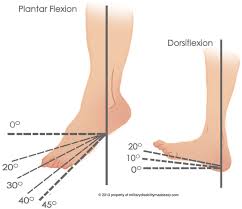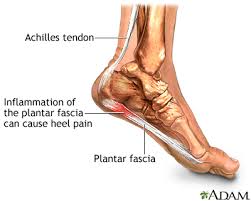The Ankle Bone Is Connected To The Shin Bone…and Knee, Hip and Back Bones!

Recent articles in this series have discussed various conditions affecting the lower leg and foot, specifically Achilles’ tendon injuries, ankle sprains and plantar fasciitis. All of these conditions manifest as pain in different areas of the lower extremity, yet they all have a common link. The shared common factor among these conditions is limited ankle dorsiflexion, or the ability of the distal foot to move upward toward the shin (“toes to nose”). Limited dorsiflexion is commonly seen following ankle sprains and fractures, especially when a period of immobilization follows trauma. This limited mobility can also set the stage for dysfunction (and pain) in other areas of the body, as the body functions as a “kinetic chain”, or an interconnected series of levers and joints. However, limited ankle dorsiflexion is not the only “guilty party” that has a tendency to affect other regions. Limited joint mobility, weakness of specific muscles, or excessive mobility can all have negative effects inother areas of the body.


 Most people have heard of plantar fasciitis and know that it is a fairly common affliction of the foot. But many fewer individuals know what plantar fasciitis is (and how in the world “fasciitis” is actually pronounced!). Plantar fasciitis (“fash-ee-itis”) is a condition that affects the plantar fascia, a band of dense connective tissue (“fascia”) located at the bottom, or “plantar” surface of the foot, typically at the area of the heel bone (calcaneus). One of the most common foot problems addressed by health care professionals, plantar fasciitis is thought to affect upwards of 2 million Americans per year, and is estimated to affect one in ten individuals during their lifetime.
Most people have heard of plantar fasciitis and know that it is a fairly common affliction of the foot. But many fewer individuals know what plantar fasciitis is (and how in the world “fasciitis” is actually pronounced!). Plantar fasciitis (“fash-ee-itis”) is a condition that affects the plantar fascia, a band of dense connective tissue (“fascia”) located at the bottom, or “plantar” surface of the foot, typically at the area of the heel bone (calcaneus). One of the most common foot problems addressed by health care professionals, plantar fasciitis is thought to affect upwards of 2 million Americans per year, and is estimated to affect one in ten individuals during their lifetime.